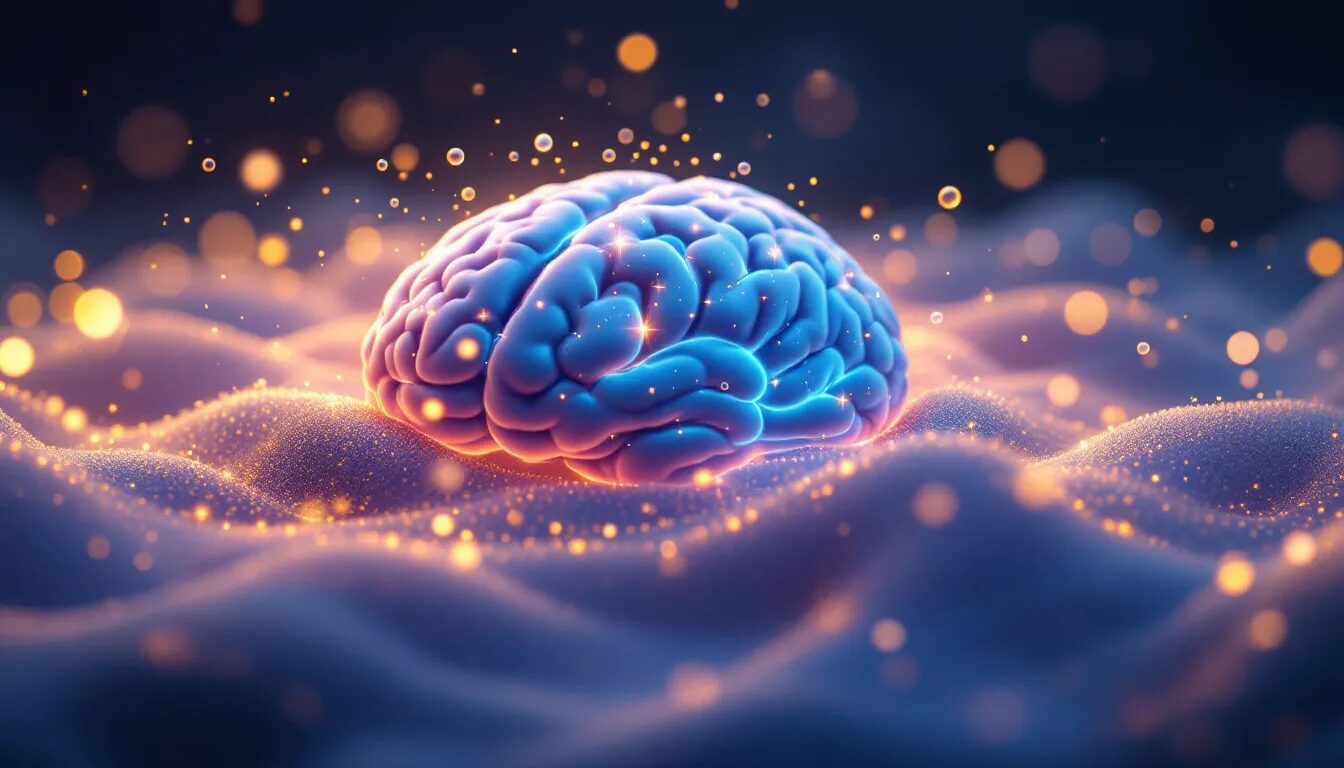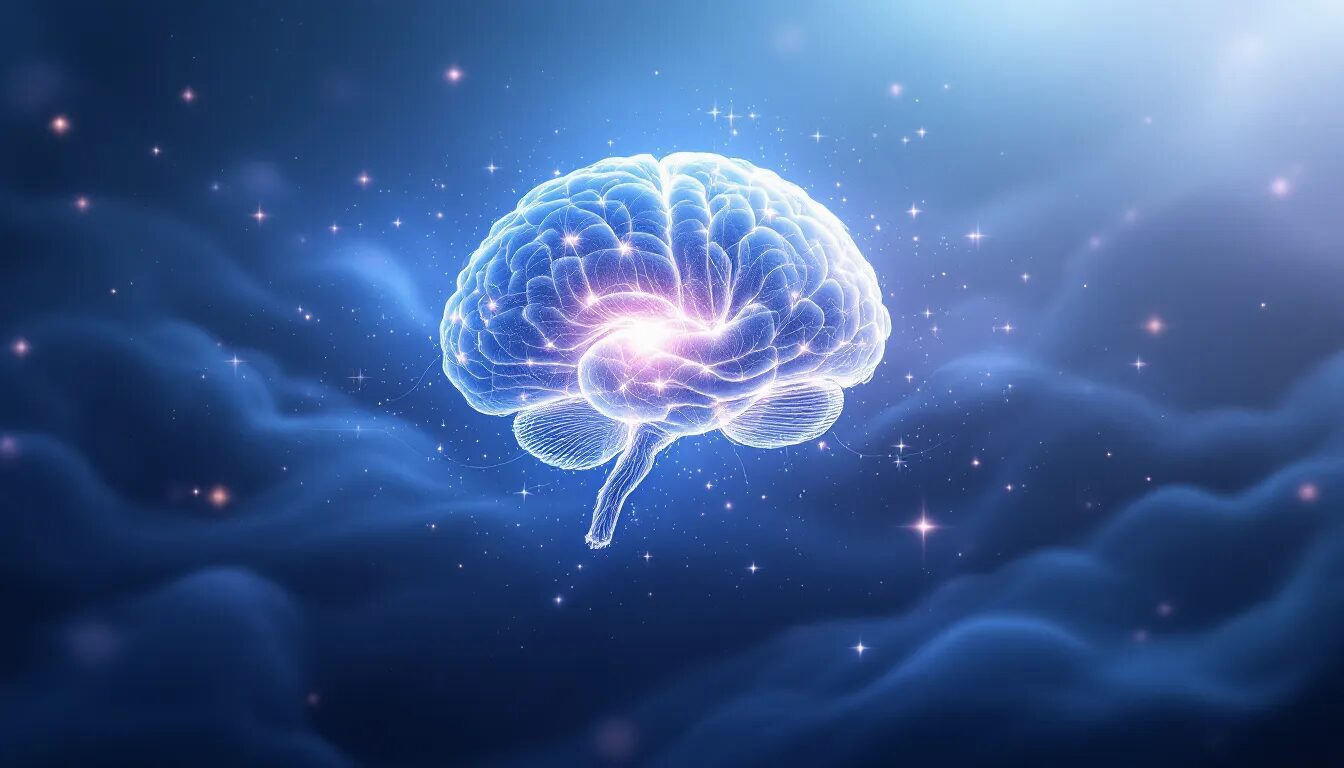How does dopamine and sleep have an effect on one another? Dopamine performs an important function in regulating sleep-wake cycles and sleep levels like REM. Understanding this connection is essential to addressing sleep problems and enhancing general well being. This text explores how dopamine and sleep affect one another, the implications of its imbalance, and potential therapies for sleep-related points.
Analysis funded by the Nationwide Institute on Alcohol Abuse and Alcoholism has highlighted the results of alcohol abuse on sleep and dopamine regulation.
Key Takeaways
- Dopamine is important for regulating sleep-wake cycles and influencing each REM and non-REM sleep patterns, with its ranges fluctuating in accordance with the circadian cycle.
- Constant dopamine ranges are essential for sustaining regular sleep structure and stopping well being points, whereas hyperdopaminergia disrupts regular sleep structure and dopamine depletion can severely impair sleep high quality and REM sleep frequency.
- Analysis signifies that concentrating on dopaminergic methods by agonists or receptor antagonists may present promising therapeutic choices for treating sleep problems linked to dopamine imbalances.
Introduction to Dopamine
Dopamine is a neurotransmitter that performs a vital function in regulating numerous physiological and psychological processes, together with motion, motivation, reward, and sleep. It’s a key participant within the mind’s reward system, reinforcing behaviors and motivating people to pursue pleasurable actions. Past its function in reward, dopamine is important for regulating sleep-wake cycles. Alterations in dopamine ranges and launch can contribute to sleep problems, highlighting the significance of this neurotransmitter in sleep regulation.
Current research have underscored the essential function of dopamine receptors and dopamine launch in modulating sleep patterns. These receptors, positioned all through the mind, assist mediate the results of dopamine on sleep. For example, D1 receptors are related to selling wakefulness, whereas D2 receptors facilitate REM sleep. Understanding how dopamine interacts with these receptors gives useful insights into its function in sleep regulation and the potential for therapeutic interventions in sleep problems.
The Position of Dopamine in Sleep-Wake Regulation
Dopamine is a linchpin within the regulation of our sleep-wake cycles. This neurotransmitter will not be solely very important for modulating wakefulness but in addition performs a pivotal function in each REM and non-REM sleep patterns. Dopamine helps us cycle by the mandatory sleep phases to realize restorative relaxation. Dopamine influences each rapid-eye-movement (REM) and non-rapid-eye-movement (NREM) sleep patterns, affecting how we transition between these levels.
The degrees of dopamine in our human mind fluctuate in an everyday sample tied to the circadian cycle, which in flip influences each our sleep and wakefulness. These fluctuations assist synchronize our inner physique clock with the exterior setting, guiding us to really feel alert throughout the day and sleepy at evening. Fluctuations in dopamine ranges throughout NREM sleep are essential for sustaining a wholesome sleep-wake cycle. Modulating these intervals helps keep a wholesome sleep-wake interval.
Analysis on animal fashions has been instrumental in uncovering these mechanisms. Research have proven that manipulating dopamine ranges can considerably affect sleep regulation, offering insights that would result in novel therapies for sleep problems. Recognizing dopamine’s function in sleep-wake regulation helps unravel the complexities of our sleep patterns.
Dopamine Receptors and Sleep States
Dopamine receptors are the gatekeepers that mediate the neurotransmitter’s results on sleep. Activation of D1 receptors is thought to advertise wakefulness, whereas D2 receptor activation is linked to facilitating REM sleep. This twin function underscores the flexibility and significance of dopamine in sleep regulation. Each REM and non-REM sleep states are influenced by these receptors, making them essential parts within the structure of sleep. The dorsal striatum is among the mind areas affected by dopamine exercise, influencing each wakefulness and REM sleep.
Research assessing the Wake–REM Similarity Index (WRSI) in rodent fashions have additional illuminated these results. These research reveal how dopamine impacts transitions between wakefulness and REM sleep, offering a clearer image of its regulatory capabilities. Understanding these interactions helps us respect how disruptions in dopamine signaling can result in sleep problems.
Dopamine Launch Throughout Sleep
Dopamine launch follows a captivating sample throughout sleep. It has been noticed to peak shortly after sleep bouts, significantly throughout the gentle part of the circadian cycle. This timing is assumed to facilitate clean transitions between sleep and wakefulness, aligning completely with the physique’s circadian rhythm. Extracellular dopamine ranges fluctuate throughout completely different sleep phases, significantly REM and NREM sleep, impacting the regulation of sleep and wakefulness. Such synchronization ensures that our sleep is each restorative and well-timed.
The essential function of dopamine in these mind transitions is significant. These peaks in dopamine launch assist the mind shift seamlessly from one state to a different, which is important for sustaining the general high quality of sleep. Adjustments in extracellular dopamine launch and reuptake mechanisms affect sleep-related behaviors, additional highlighting the importance of dopamine dynamics. Aligning with the physique’s pure rhythms ensures that our sleep is each efficient and conducive to our day by day schedules.
The Position of Dopamine Transporter
The dopamine transporter (DAT) is a protein that performs a pivotal function in regulating dopamine ranges within the synaptic cleft. By reuptaking dopamine into the presynaptic neuron, DAT helps terminate the motion of dopamine, thereby controlling the length and depth of dopamine signaling. This regulation is essential for sustaining balanced dopamine exercise, which is important for regular sleep-wake cycles.
Alterations in DAT expression and performance can considerably affect sleep patterns. For instance, research on DAT knockout mice have proven that these animals exhibit elevated wakefulness and lowered fast eye motion (REM) sleep. This means that correct DAT operate is critical for sustaining regular sleep structure. Moreover, DAT is a goal for numerous medicine, together with cocaine and amphetamines, which might disrupt dopamine steadiness and result in sleep disturbances. Understanding the function of DAT in sleep regulation will help in creating methods to deal with sleep problems linked to dopamine dysregulation.
Results of Hyperdopaminergia on Sleep Patterns

When dopamine ranges soar, the affect on sleep structure will be profound. Elevated dopamine ranges, a situation referred to as hyperdopaminergia, can result in vital alterations in sleep patterns, together with the potential for REM-like exercise throughout wakefulness. This irregular state can disrupt the pure development of sleep levels, main to numerous well being points, together with sleep problems. Elevated dopamine ranges result in vital adjustments in cognitive processes and responses to psychostimulant medicine.
Hyperdopaminergia isn’t just a theoretical concern; it has real-world implications. Elevated dopamine ranges are linked to quite a few well being situations, reminiscent of temper disturbances and neurodegenerative ailments, which might additional complicate sleep high quality. Analysis has led to a greater understanding of the affect of hyperdopaminergia on sleep high quality. Correcting these imbalances is significant for general well-being.
One potential resolution lies in using dopamine receptor antagonists. Therapy with D2 dopamine receptor antagonists has been proven to cut back irregular REM bouts-like exercise throughout wakefulness. This method provides a promising avenue for mitigating the disruptive results of hyperdopaminergia on sleep.
REM-Like Exercise in Wakefulness
In mice with hyperdopaminergia, the neural exercise patterns noticed throughout REM sleep can overlap considerably with these seen throughout wakefulness. This phenomenon highlights a state of altered consciousness, the place the mind displays REM-like neural oscillations even whereas the animal is awake. Publicity to novel environments can set off these uncommon states, additional demonstrating the affect of elevated dopamine ranges.
Apparently, the administration of dopamine receptor antagonists, reminiscent of haloperidol, can mitigate these results. Lowering REM-like oscillations throughout wakefulness helps restore regular sleep patterns. This discovering underscores the significance of managing dopamine ranges to keep up wholesome sleep-wake cycles.
Pharmacological Induction of Hyperdopaminergia
Medication like amphetamines can considerably elevate dopamine ranges, affecting each wakefulness and sleep states. These substances artificially elevate dopamine, leading to mind exercise patterns that resemble these noticed throughout REM sleep, even whereas awake. This pharmacological induction of hyperdopaminergia will increase dopamine and gives a stark instance of how dopamine can alter consciousness and sleep structure.
Pharmacological manipulations have demonstrated that altering dopamine ranges can considerably affect sleep patterns in rodent fashions. These research spotlight the potential for creating focused therapies to deal with sleep disruptions brought on by elevated dopamine ranges.
Dopamine Depletion and Sleep Disruption

On the alternative finish of the spectrum, dopamine depletion can result in extreme sleep disruption. Lowered dopamine ranges are related to a state characterised by diminished slow-wave sleep (SWS) and an entire lack of REM sleep. Alterations in norepinephrine ranges can even affect the amount and high quality of REM sleep. This depletion not solely impacts sleep high quality however can even result in broader implications for general well being, together with sleep loss.
Elevated dopamine ranges, whereas disruptive, spotlight the fragile steadiness required for regular sleep structure. Irregular fluctuations in dopamine can result in numerous sleep problems, impacting each psychological and bodily well-being. Understanding these results is essential for creating methods to keep up wholesome sleep patterns.
Various dopamine ranges are linked to completely different sleep qualities, underscoring the significance of this neurotransmitter in sleep regulation. The time spent in several sleep phases can also be affected by dopamine depletion. Sustaining the correct steadiness is important for reaching restorative sleep and avoiding the pitfalls of sleep deprivation.
Influence on REM Sleep
Dopamine depletion has a profound affect on REM sleep. In mice, this depletion leads to a major lower within the frequency and length of REM sleep episodes. The suppression of REM sleep highlights the essential function of dopamine in sustaining this important stage of sleep.
Dopamine’s function in REM sleep is indispensable. With out enough dopamine ranges, the standard and length of REM sleep are compromised, resulting in potential sleep problems and general well being points. Making certain enough dopamine exercise is essential to preserving REM sleep.
Restoration Via Dopaminergic Pathways
Restoring regular sleep patterns in dopamine-depleted states typically entails using dopaminergic agonists. These compounds stimulate dopamine receptors, mimicking the results of dopamine within the mind. Agonists like pramipexole and ropinirole have proven potential in enhancing sleep high quality by appearing on dopaminergic pathways.
Pharmacological research point out that concentrating on the dopaminergic system generally is a promising method to mitigate sleep disturbances ensuing from dopamine depletion. Enhancing dopamine exercise will help restore regular sleep structure and enhance general well-being.
Sleep Deprivation and Dopamine Imbalance
Sleep deprivation can result in vital imbalances in dopamine ranges, with profound results on each physiological and psychological capabilities. Analysis has proven that people who’re sleep-deprived exhibit elevated dopamine launch and altered dopamine receptor expression. This heightened dopamine exercise can quickly increase alertness, motivation, and reward-seeking conduct, which could appear useful within the quick time period.
Nonetheless, persistent sleep deprivation can result in dopamine dysregulation, contributing to a spread of points, together with sleep problems, temper disturbances, and different neurological and psychiatric situations. The affect of sleep deprivation on dopamine is complicated, involving each speedy and long-term adjustments in dopamine launch, receptor expression, and general sleep regulation. Understanding these dynamics is essential for creating interventions to mitigate the adversarial results of sleep deprivation on dopamine steadiness and general well being.
Dopamine’s Interplay with Circadian Rhythms

Dopamine’s affect extends past sleep-wake regulation to the intricate dance of circadian rhythms. This neurotransmitter performs a vital function in regulating the physique’s inner clock by appearing throughout the pineal gland. The pineal gland is important for adjusting organic processes to day-night cycles, guaranteeing that our sleep patterns align with the pure world. Circadian rhythm disturbances can result in alterations in physique mass index and related behavioral problems, highlighting the broader implications of sleep regulation on metabolic well being and weight administration.
The fluctuations in dopamine ranges all through the day are synchronized with these circadian rhythms, serving to to manage sleep timing and high quality. Dopamine uptake is negatively correlated with wake time, affecting general sleep high quality. Influencing the physique’s inner clock ensures we really feel sleepy at evening and alert throughout the day, balancing relaxation and wakefulness.
Affect on Sleep Timing
Dopamine launch patterns range considerably throughout completely different sleep levels, influencing the transition between sleep and wakefulness. Important dopamine launch throughout REM sleep in comparison with waking or non-REM sleep highlights its function in these transitions. These patterns assist decide after we really feel sleepy or alert, affecting the timing of sleep onset and wakefulness.
Analysis signifies that dopamine influences the timing of sleep onset by affecting the expression of particular clock genes. These genes assist regulate our inner clocks, guaranteeing that our sleep patterns are in sync with the pure cycles of sunshine and darkish.
Dopamine and Sleep Problems
Dysregulation in dopamine exercise is linked to numerous sleep problems, together with insomnia and stressed leg syndrome. Elevated dopamine ranges can result in elevated wakefulness and sleep fragmentation, exacerbating situations like insomnia. Disruptions in dopamine transporter operate can additional exacerbate these situations, impacting general sleep high quality.
Concentrating on dopaminergic methods with particular drugs provides new therapeutic choices for enhancing sleep high quality in people with sleep problems. Drugs that improve dopamine signaling, reminiscent of MAO-B inhibitors, are being explored for his or her potential to deal with sleep disturbances. Concentrating on dopamine receptors might provide new avenues for enhancing sleep well being.
The Influence of Drug Abuse on Dopamine
Drug abuse can profoundly have an effect on dopamine regulation, with numerous substances altering dopamine launch, receptor expression, and transporter operate. Cocaine, as an illustration, blocks the dopamine transporter (DAT), resulting in elevated dopamine ranges and extended dopamine signaling. This disruption may end up in vital alterations in sleep patterns and general mind operate.
Amphetamines, then again, enhance dopamine launch and alter dopamine receptor expression, additional contributing to dopamine imbalance and sleep disturbances. The affect of drug abuse on dopamine regulation extends past sleep, affecting temper, cognition, and conduct. Understanding these results is important for creating efficient therapies for dependancy and associated problems. By addressing the underlying dopamine dysregulation, we are able to higher handle the physiological and psychological penalties of drug abuse.
Experimental Insights from Animal Fashions
Animal fashions have supplied invaluable insights into the function of dopamine in sleep regulation. Hyperdopaminergic DAT-KO mice, as an illustration, exhibit a considerable overlap between wakefulness and REM sleep clusters, indicating altered sleep regulation as a result of dopamine modulation. Research on rats have supplied insights into dopamine launch and its fluctuations throughout completely different sleep phases. These research make the most of refined methods just like the sliding window Fourier rework to investigate mind exercise and perceive dopamine’s affect on sleep.
The experimental setup typically contains particular situations to watch distinct sleep and wake patterns. For instance, situations involving 2 hours of remark with a minimum of 10 minutes of wakefulness and a couple of minutes of REM sleep assist create distinct spectrogram patterns. Dopamine launch within the ventral striatum fluctuates based mostly on sleep states and circadian rhythms. Such detailed evaluation permits researchers to uncover the intricate methods wherein dopamine influences sleep.
Genetic Fashions of Hyperdopaminergia
Genetic fashions like DAT-KO mice have been instrumental in finding out hyperdopaminergia. These mice exhibit altered mind exercise patterns, reminiscent of theta oscillations throughout wakefulness, indicating increased dopamine ranges. When uncovered to novelty, DAT-KO mice enter a novel awake state with REM sleep-like hippocampal activation patterns, additional illustrating the affect of elevated dopamine neurons induced by their genetic modifications and dopamine transporters.
Dopamine-depleted mice, then again, enter a state resembling slow-wave sleep whereas suppressing REM sleep. These findings spotlight the varied results of dopamine on sleep states, relying on whether or not ranges are elevated or diminished.
Pharmacological Research in Rodents
Pharmacological research in rodents have additionally make clear dopamine’s function in sleep. Utilizing D2 dopamine receptor agonists can get well REM sleep in dopamine-depleted mice. These research measure Wake–REM Similarity Index (WRSI) values in hyperactive animals to know the results of pharmacological therapies on reuptake and sleep patterns.
These findings underscore the potential for creating focused therapies to deal with sleep disruptions brought on by dopamine imbalances. By manipulating dopamine ranges with a drug pharmacologically, researchers have discovered new avenues for enhancing sleep well being.
Implications for Human Well being

The implications of dopamine’s function in sleep prolong far past animal fashions. Disruptions in dopamine ranges can result in numerous sleep problems in people, reminiscent of insomnia and stressed leg syndrome. Analysis from the Nationwide Institute on Drug Abuse has highlighted the dangerous penalties of sleep deprivation on mind operate. Recognizing these disruptions is significant for creating efficient therapies and enhancing general sleep high quality.
Potential therapies concentrating on dopaminergic pathways intention to revive sleep high quality in affected people. By specializing in the mechanisms of dopamine motion, these therapies provide promising avenues for addressing sleep-related ailments and enhancing human well being. Even one evening with out sleep can result in vital cognitive impairments and well being points.
Sleep Problems in People
Dopamine performs a vital function in sustaining circadian rhythms by modulating the exercise of clock genes and proteins in numerous mind areas. Disruptions in dopamine ranges can result in numerous sleep problems, as this neurotransmitter is important for correct sleep structure. The exercise of dopaminergic neurons peaks throughout wakefulness, correlating with the length of subsequent wake episodes.
Sustaining wholesome dopamine ranges is important for correct sleep regulation and avoiding the onset of sleep problems. Understanding dopamine’s function in sleep permits higher administration and remedy of sleep-related points in people.
Potential Therapies
Dopaminergic agonists can successfully restore REM sleep in animals which have undergone dopamine depletion. Analysis signifies that the administration of gear reminiscent of l-DOPA, Quinpirole, and SKF-81297 can promote REM restoration. These findings spotlight the potential for creating focused therapies that improve dopamine signaling to enhance sleep high quality.
Future research and scientific trials might be essential in translating these findings into sensible therapies for people. A brand new examine leveraging insights from animal fashions and pharmacological research will help discover new therapies for sleep problems and improve general well being, as supported by the nationwide institutes of well being, integrating integrative neuroscience into the analysis method to contribute to the flexibility of the analysis effort. Current research can additional inform these efforts.
Dopamine Regulation Methods
Sustaining optimum dopamine operate is important for general mind well being and well-being. Varied methods will help regulate dopamine ranges and forestall dopamine-related problems. Way of life modifications, reminiscent of common train, a nutritious diet, and enough sleep, play a vital function in supporting dopamine operate. These habits will help keep balanced dopamine ranges and promote wholesome sleep-wake cycles.
Pharmacological interventions, together with dopamine agonists and antagonists, provide further instruments for managing dopamine-related problems. Current research have highlighted the potential of integrative neuroscience approaches, reminiscent of mindfulness and meditation, in regulating dopamine operate. These practices can improve general mind well being and contribute to raised sleep high quality.
Future research ought to concentrate on creating customized dopamine regulation methods, contemplating particular person variations in dopamine operate, genetics, and environmental components. By understanding the complicated mechanisms underlying dopamine regulation, we are able to develop efficient therapies for dopamine-related problems and promote general well being and well-being. Integrating insights from current analysis and leveraging the help of establishments just like the Nationwide Institutes of Well being might be essential in advancing this discipline.
Abstract
In abstract, dopamine performs a multifaceted function in regulating sleep-wake cycles and circadian rhythms. Its affect extends to each REM and non-REM sleep, guaranteeing that we obtain restorative relaxation. Disruptions in dopamine ranges, whether or not elevated or depleted, can result in vital alterations in sleep patterns and numerous sleep problems. Understanding the mechanisms of dopamine motion is essential for creating efficient therapies and enhancing sleep high quality. Positron emission tomography (PET) scans have revealed vital insights into the results of sleep deprivation on mind operate.
As we proceed to uncover the complexities of dopamine’s function in sleep, the promise of higher nights and brighter days turns into extra attainable. By harnessing the ability of this neurotransmitter, we are able to improve our understanding of sleep-related ailments and develop focused therapies that promote general well being and well-being. PET scans have been used to review dopamine transmission and its affect on sleep-related ailments.
Incessantly Requested Questions
How does dopamine affect sleep-wake cycles?
Dopamine performs a vital function in regulating sleep-wake cycles by moderating each REM and non-REM sleep, thus facilitating restorative relaxation and aligning sleep patterns with circadian rhythms.
What occurs when dopamine ranges are elevated?
Elevated dopamine ranges may cause disruptions in regular sleep patterns, resulting in vital adjustments in sleep structure, together with REM-like exercise throughout wakefulness. Therefore, managing dopamine ranges is essential for sustaining wholesome sleep.
How does dopamine depletion have an effect on sleep?
Dopamine depletion considerably impairs sleep by decreasing slow-wave sleep and eliminating REM sleep, in the end compromising general sleep high quality and well being.
Are there therapies for sleep problems associated to dopamine imbalances?
Therapies for sleep problems related to dopamine imbalances, reminiscent of dopaminergic agonists, can successfully restore sleep high quality and alleviate disturbances. It’s essential to seek the advice of a healthcare skilled for acceptable remedy.
What have animal research revealed about dopamine’s function in sleep?
Animal research have revealed that altering dopamine ranges can notably have an effect on sleep patterns, suggesting potential pathways for creating new therapies for sleep problems.
Trending Merchandise

Organic Waterproof Mattress Protect...

HYLEORY Waterproof Queen Size Mattr...

Samebed 100% Waterproof Mattress Pr...

COONP King Mattress Topper, Extra T...

CoolShields Waterproof Bed Pads Inc...

ELVEN HOME King Size Mattress Pad W...

Waterproof Zippered Plastic Mattres...

Lunsing Full Size Mattress Protecto...

Full Size Mattress Protector Waterp...

